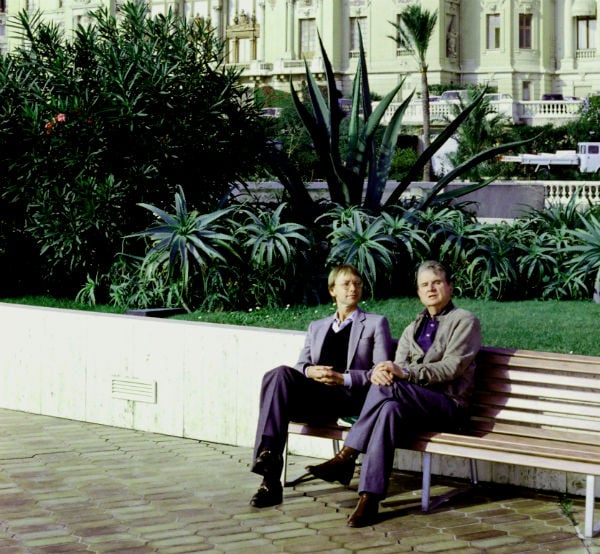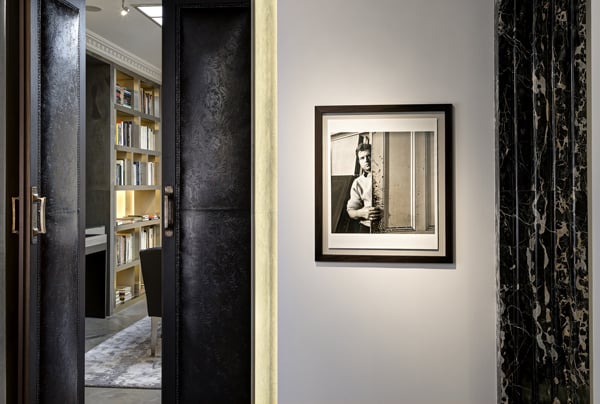Art & Exhibitions
Prince Albert Inaugurates Francis Bacon Foundation in Monaco
The project sheds new light on the artist’s life in the principality.

The project sheds new light on the artist’s life in the principality.

Coline Milliard

Prince Albert of Monaco is due to inaugurate the Francis Bacon MB Art Foundation in Monte Carlo today. The opening of the philanthropic organization marks the anniversary of the birth of the British painter on October 28, 1909 in Dublin, far from the sunny shores of the Mediterranean.
The foundation is the brainchild of Lebanese-born Swiss property developer Majid Boustany. It gathers over 2,000 Bacon-related items including artworks, photographs, works on paper, and working documents, as well as examples of the artist’s furniture and rug designs. Some are on public view for the first time.
Boustany first fell for Bacon when he saw Three Studies for Figures at the Base of a Crucifixion (1944) at Tate Britain, while studying in London. “I was shocked by the profoundly disturbing half-human, half-animal organic forms, but, strangely enough, I felt utterly fascinated by these menacing creatures, surrounded by vivid cadmium orange,” he told artnet News. “My fascination with the oeuvre of this uncompromising artist, who described the images he created as a ‘concentration of reality,’ has grown constantly over the last 20 years.”
The philanthropist, who has been a resident of Monaco for the last three decades, has developed a particular interest for Bacon’s little-known Monegasque period. With the proceeds the artist made from selling Painting 1946 to dealer Erica Brausen in 1946 (she later sold it to the Museum of Modern Art in New York), he moved to Monaco. He continued to live in the principality until the early 1950s.
“I have found a villa with what I hope will be a wonderful room to work in,” Bacon wrote to the gallerist in an undated letter published in Michael Peppiatt’s Francis Bacon in the 1950s. “There are plenty of rooms and bathrooms so do come and stay if you feel like it at any time … It’s wonderful here, terribly expensive, and the days hot and trembling like the middle of Summer.”
As Boustany pointed out, there is still much to discover about the impact of Bacon’s time in Monaco on his pictorial production. This is one of the areas the foundation has been created to investigate. And the findings are potentially very rich. “We’ve discovered that Bacon started painting on the unprimed side of the canvas after losing all of his money in the Monaco Casino,” said Boustany, “and as you know, this became one of the trademarks of his style!”

Francis Bacon’s studio, January 1960
Photo: © Sotheby, The Cecil Beaton Studio Archive; MB Art Collection
The Francis Bacon MB Foundation will operate in close collaboration with the Francis Bacon Estate. Bacon scholar Martin Harrison─who is currently editing the artist’s catalogue raisonné for the estate─sits on the foundation’s board. But this took some convincing. Talking to the Observer, Harrison noted: “He [Boustany] seemed too good to be true. Everyone was a bit skeptical … They checked Boustany out. His family … are philanthropists and they give scholarships in business studies to Harvard and Cambridge each year. Everything checked out … He spends about 24 hours a day working on Bacon!”
The foundation occupies the ground floor of Villa Elise at 21 Boulevard d’Italie, a domestic space inspired by the artist’s remark that he preferred to have his work shown in small space “where his paintings seemed more intense.” The foundation will organize exhibitions in partnership with other institutions and fund research, starting with a 12-month project led by art historian Katharina Günther. Meanwhile, the organization will continue to acquire material for the collection.
Boustany doesn’t let the sky-rocketing Bacon market worry him. (The artist’s Three Studies of Lucien Freud became the most expensive artwork sold auction when it fetched $142.4 at Christie’s New York in November of last year.) “We already have the biggest private collection in the world,” he told artnet News, “but our interest is really in items that will be of use in research, rather than the pricier end of the market that involves record-breaking oil paintings.”
Members of the public will be able to visit the foundation by appointment beginning in March 2015.